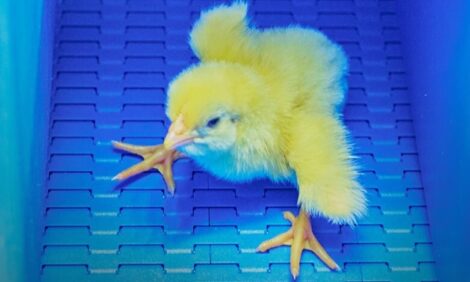



Estonian Poultry Society and Poultry Breeding
By Dr Matti Piirsalu, Department of Agriculture, Ministry of Agriculture of Estonia and the Estonian Poultry SocietyEstonian Poultry Society (EPS) was founded on 21 December
1919 to settle mainly practical matters. It provided its
members with beneficial feeds for poultry and small animals,
supplied them with high-quality pedigree material, and organized
special courses. The poultry herdbook keeping was
started in 1928 (hens laying at least 170 eggs and the mothers
of roosters at least 190 eggs, were recorded).
In 1929 the Poultry Research Station was established by
Kehtna Higher School of Economics. The poultry test station
with 45 hens started work in order to control pedigree
poultry, to carry out feeding experiments and to select valuable
breeding material.
In 1939 Estonian Egg Export – the Central Union of the poultry
product producers and selling co-operatives was founded.
World War II stopped the activities of the Union and in 1949
it was liquidated.
EPS resumed its activities on 21 December 1989. Eleven
members were elected to the board and Renaldo Mändmets
was elected chairman. Matti Piirsalu was initially elected secretary
and later chairman.

Since 1990 poultry fairs and exhibitions have been arranged
at Poltsamaa. Presently EPS has 73 single and 13 collective
members. The tasks of the society have changed, embracing
advisory and counselling services, preservation of
Estonian quail as an endangered breed, refreshment courses
and information distribution.
The most active members of EPS are the following persons:
a vet and poultry breeder Aare Filippov, Prof. Emer. Harald
Tikk, researcher Viive Tikk, Peep Lass and Vello Ilves. The
society has 14 honorary members.
Collective members of the society are the following companies:
Tallegg (Harju), Milletel (Rapla), Karinu (Järva), Ovolex
(Saare), Farm Plant Eesti (Viljandi), Remolius (Tartu),
Tamsalu Veskid (Lääne-Viru), Sanlind (Valga), Äntu Mõis
(Lääne-Viru), Li-Fi (Viljandi), Peri (Põlva), Interfarm (Tallinn)
and Kehtna Mõis (Rapla).
In Estonian big companies egg- and meat-type hens are
raised, at the same time in small farms and holdings a considerably
smaller number of guinea-fowls, quails, turkeys,
geese, ducks, Musk ducks, fancy hens and pheasants are
being kept.
Agricultural Census of 2001 revealed that there were 25,760
agricultural holdings with the total of 2.4 million birds including
1.1 million egg-type hens, 7,380 geese, 17,990 ducks
and 700 turkeys.

(H. Viinalass)
In 1960 the only elite breeding farm of hens and Emden geese
was the experimental poultry farm at Kurtna (Harju) where
hens of White Leghorn, New Hampshire and Australorp
breeds were raised. In 1961 elite breeding farm of Sussex,
Cornish and white tailed red hens which were imported from
England, was founded at Järlepa poultry breeding farm
(Rapla). At the beginning of the 1960s elite farm existed at
Kurtna as well. In 1963 there were 118 reproduction farms for hens, 5 for geese and one for turkeys in addition to elite
farms.
In 1965 pedigree poultry breeding system was applied in
both egg and poultry meat production. A new breeding farm
Sakala started. The tasks of breeding farms were to design
specialized lines with high performance to improve the existing
lines and to find appropriate combinations (crosses)
for combining and crossing lines, also to maintain the high
value properties of imported lines. Breeding material was
evaluated at Kehtna Poultry Test Station from 1966 until 2000
when it was closed.
Recording data were distributed to all poultry breeding farms
and on the basis of these results pedigree breeding farms
sent proper initial lines or parents to reproduction farms.
In 1968 Poultry Breeding Board was founded that coordinated
poultry breeding until 1989.
Poultry breeding is very specific and expensive. In the world
there are about 10 large poultry breeding companies that
produce 90 per cent of the breeding material of a hundred existing
hen crosses.

(A. Juus)
In 1991 when Estonia regained its independence, the supply with breeding material improved. Being based only on local breeding material, it was impossible to achieve the production results of European leading poultry breeding countries. Therefore breeding material of parent flocks from the best breeding companies abroad was imported and reproduced for egg and poultry meat production.

(A. Juus)
Foreign breeding companies that are most well-known in
Estonia are Lohmann, ISA, De Kalb and Hy Line. The top
breeding companies of meat-type hens are Cobb, ISA and
Ross, also Euribrid from the earlier period. In 2003 the percentage
of breeding material of egg-type hens among several
other hen crosses was the following:
Hisex white 26
Hisex brown 28
ISA brown 17
Hy-Line brown 14
- Hy-Line white 8
- Shaver 2000 7
In the breeding of meat-type hens, crosses Ross 208 (95 per cent)
and Ross 508 (5 per cent) are being used. In the last three years
the best parent flock of meat-type hens has been Ross 208
in company Tallegg.
Total number of poultry has decreased more than 50 per cent but
due to the use of imported crosses, the average egg production
at the moment is 303 eggs per hen (Table 1). Daily
mass gain of hen broilers increased nearly twice (from 27 to
50 g). Success in egg- as well as in meat-type hen breeding
has been great.
Number and Production of Poultry in 1993-2002

December 2012








